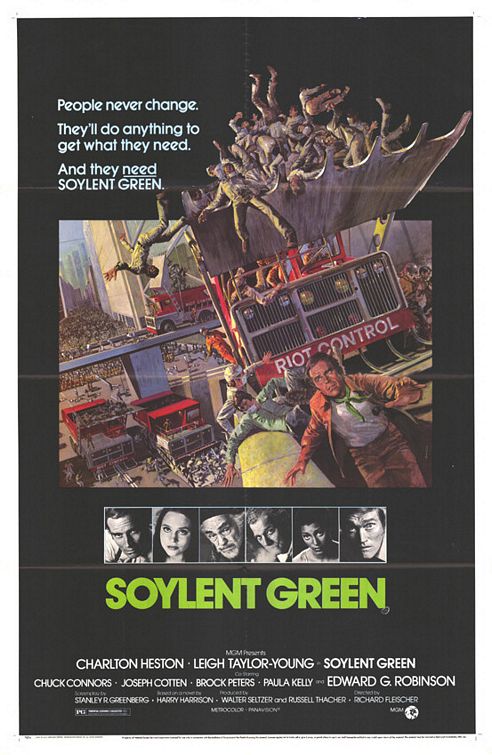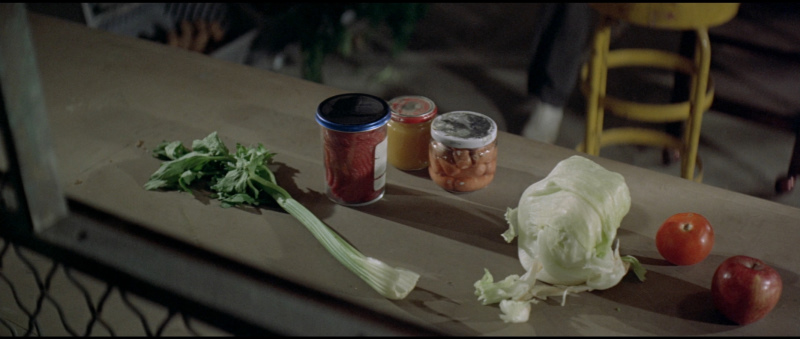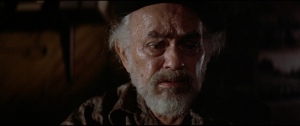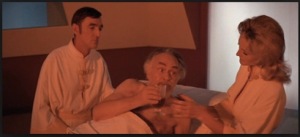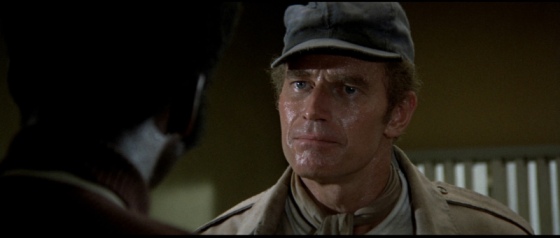Another double feature at the Paramount Theater on a Saturday afternoon. Two films featuring Orson Wells, one of them was also directed by him. Both films have classical elements to them which might put them on anybody's Best Lists.
The Third Man
Carol Reed directs a post war thriller created by Graham Greene specifically for film. This was a David Selznick Production so everything was first class but it is certainly an unusual setting for a Selznick film. The actual producer was Alex Korda so it is more accurately a British Film and it thoroughly feels like that. The film is considered a noir, although some traditional elements of a noir seem to be minor. The thing that most justifies that classification is the style in which the film is shot.
The use of black and white is highly expressionistic and the shadows, silhouettes and sudden reveal of Orson Wells character are famous for the atmosphere they create. One characteristic that does not feel noir like at all is the soundtrack, infused with zither instrumentation, it is terrific for the film but rarely ominous or sinister. Still, a non-traditional noir is still a noir when it features a mysterious murder, duplicitous characters, unfaithful women, and a villain who is charming, even if he has no scruples.
Joseph Cotten is Holly Martins, a writer of pulp westerns, who has travel to Vienna to join his friend Harry Lime, only to discover that Lime is dead, and Vienna has no use for him. There are a number of bumbling American tropes thrown in to make him feel even more out of place, but his loyalty to his friend may be the one that is most subtle and important. It takes a lot for Holly to recognize that his friend would not be recognizable to him, if Holly knew his real business. The famous shot of Harry Lime being revealed is the start of Holly's doubts. Before he could dismiss evidence and opinion, but his own eyes tell him that Harry can't be trusted.
In addition to the mystery, and ultimately a chase through the sewers of Vienna, there is an unrequited love story. Anna Schmidt loves Harry, Holly falls in love with Anna, Harry never really loved Anna, and apparently loved Holly's friendship under false pretenses. It is all very complex, and it gets more so as Harry's confederates murder witnesses and even help frame Holly for the crimes. The British, who were fooled at first but Lime's deception, don't fall for any of the subsequent traps, so Holly is never really at risk, but it does make for an interesting twist two thirds of the way into the film.
Two quick James Bond connections; future Bond director John Glen was working in the editing department at Shepperton Studios when the film started production. He had a similar build to Joseph Cotten and was enlisted to supply the sound of his footsteps in post-production sound dubbing. Bernard Lee, who plays the sympathetic British Sargent and fan of Western Novels, would go on to play "M", 007s boss in eleven Bond films.
I don't think anyone left after the first feature, it looked like the house stayed the same size for the second film.
Touch of Evil
I have seen this film several times, but I have to admit, they have all been after it was restored in 1998. The stories of how the film was butchered after it was delivered by Welles seem to echo the experience he had with "The Magnificent Ambersons". Still the film had a solid reputation even before the repairs were made to it in 98. I should probably admit to an affinity for the movie because it also came out in the year of my birth, so whenever one of those calendar references comes up, it is sitting right there.
The drug gangs of today are certainly more brutal than the mob that is in this film. Here the criminals seek to tarnish the legacy of their main adversary through a complicated plot. Today's cartels would simply torture him, cut off his head and display the body in public to discourage follow up. I don't think we are getting more civilized as we move forward. I suppose it is justifiable to say that in modern times, Charlton Heston would never be cast to play a Mexican using brown face make up, but that social constraint is mild compared to the truth of border town life these days.
The movie opens with the famous continuous tracking shot, culminating in an explosion. Director Orson Wells is showing off here, but it seems that the studio largely left him alone while the film was being made, so he had a lot more fun playing around with these moments then he'd had on other studio films. Wells was a husky but handsome figure in "The Third Man", but ten years later in this film, he is clearly overweight and looks unhealthy. Much of that was the make-up and prosthetics but not all of it, and it shows at times.
Wells did have control over the story, since he is the one who switched the nationalities of the two leads and made Charlton Heston a Mexican. Much of the film is shot at night so we get many sequences that make the film feel noirish. Wells seems to have wanted to confound the audience with the plot, and used characters in several over the top moments (notably Dennis Weaver) to distract the audience from paying too close attention to what was going on. The score is jazz infused and dark, which fits the mood of the picture well. It is no surprise that the Mexican Government was not keen on letting the film be shot in the planned Tijuana, this is not exactly a tourism ad. Venice California substitutes for TJ, and my understanding is that this is an even more accurate switch today, because of thew homeless problem.


